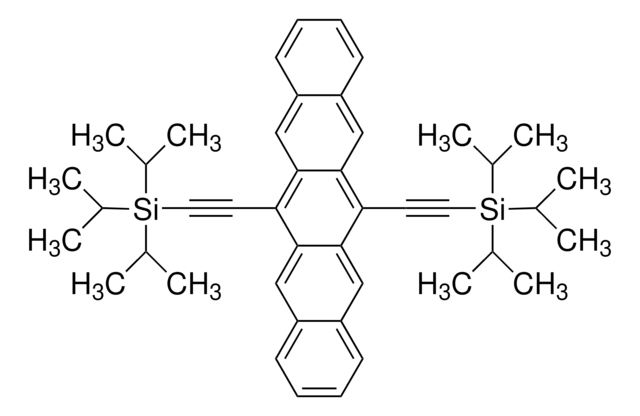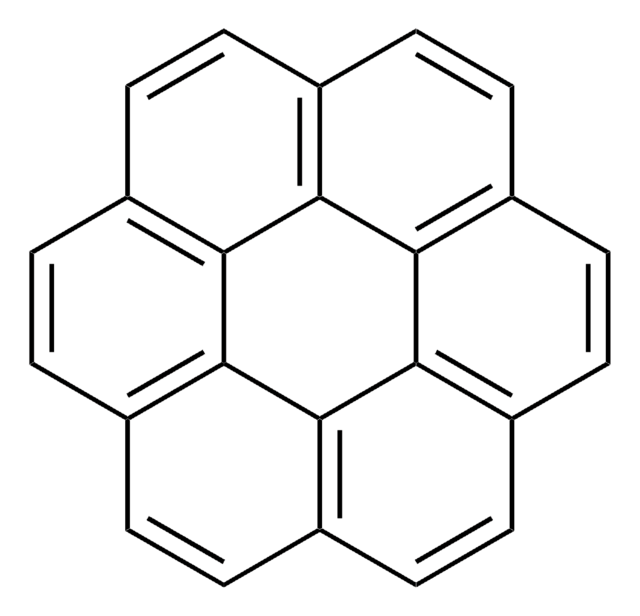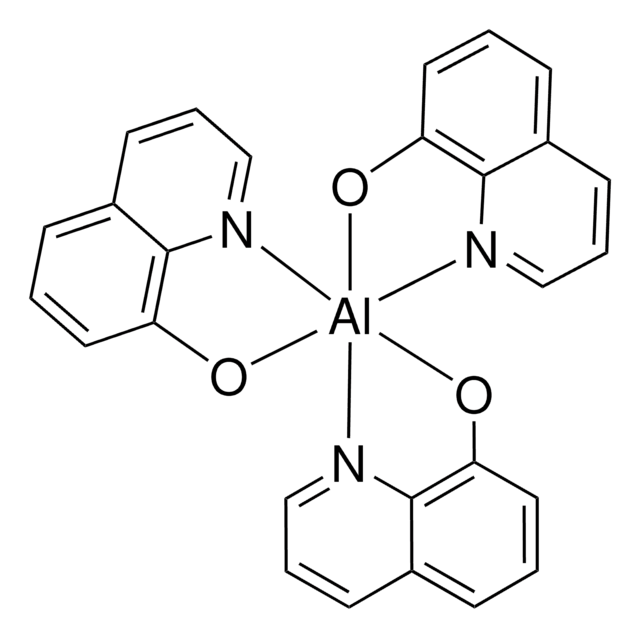R2206
Rubrene
powder
Sinónimos:
5,6,11,12-Tetraphenylnaphthacene
About This Item
formulario
powder
mp
330-335 °C (lit.)
λmáx.
299 nm
rendimiento de la unidad OLED
ITO/CuPc/NPD/Alq3:Rubrene (5%): DCM2 (2%)/Alq3/Mg:In
ITO/PEDOT:PSS/EHCz:Rubrene (1 wt%)/Cs2CO3:ITO
cadena SMILES
c1ccc(cc1)-c2c3ccccc3c(-c4ccccc4)c5c(-c6ccccc6)c7ccccc7c(-c8ccccc8)c25
InChI
1S/C42H28/c1-5-17-29(18-6-1)37-33-25-13-14-26-34(33)39(31-21-9-3-10-22-31)42-40(32-23-11-4-12-24-32)36-28-16-15-27-35(36)38(41(37)42)30-19-7-2-8-20-30/h1-28H
Clave InChI
YYMBJDOZVAITBP-UHFFFAOYSA-N
¿Está buscando productos similares? Visita Guía de comparación de productos
Categorías relacionadas
Aplicación
Código de clase de almacenamiento
11 - Combustible Solids
Clase de riesgo para el agua (WGK)
WGK 3
Punto de inflamabilidad (°F)
Not applicable
Punto de inflamabilidad (°C)
Not applicable
Equipo de protección personal
Eyeshields, Gloves, type N95 (US)
Certificados de análisis (COA)
Busque Certificados de análisis (COA) introduciendo el número de lote del producto. Los números de lote se encuentran en la etiqueta del producto después de las palabras «Lot» o «Batch»
¿Ya tiene este producto?
Encuentre la documentación para los productos que ha comprado recientemente en la Biblioteca de documentos.
Los clientes también vieron
Nuestro equipo de científicos tiene experiencia en todas las áreas de investigación: Ciencias de la vida, Ciencia de los materiales, Síntesis química, Cromatografía, Analítica y muchas otras.
Póngase en contacto con el Servicio técnico![Benz[b]anthracene sublimed grade, 99.99% trace metals basis](/deepweb/assets/sigmaaldrich/product/structures/197/885/3a015625-5e09-4f15-8b17-4cc285304fc7/640/3a015625-5e09-4f15-8b17-4cc285304fc7.png)




